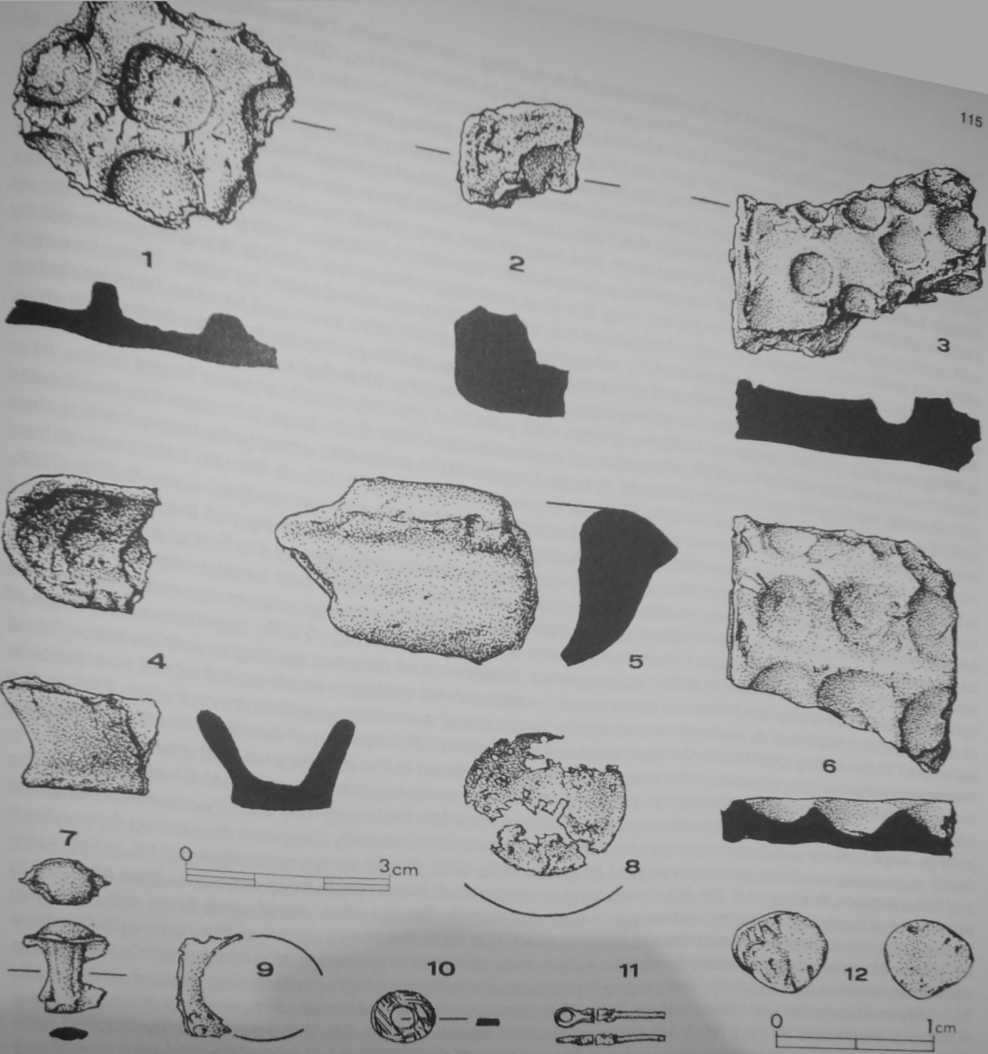84543 S5002144
^mśf wo^ered from - ^ariety o1 materials, -^cisive for dotormining their )m the hillfort of Pohanskś at mi aid (Raułfk 1976, 151, Fig. as weII as in the construction it from Stradonice, based on dosers. The examples from pey are considerabfy heavier [rent (.Jacobi 1974, 243-244,
ion waste
[ance area behind the maJn represent evidence of craft iron, precious and non-iron d the production of amber,
| of the oppidum is provided lecialfy technical cg ram i cs,
the hill settlement, already i of baked clay (Fig. 39:3), he access road. According s practiced in quite a large ind within house 187 (Fig. found from rectangular pit rtuated to the north of the in the relath/e size of their m. The casting of coins of ig of different coin values. ould not be established, Is were rectangular with 1903, PI. LVIII:4, 12) are ong shapes with distinctly umber of casts that co u Id k 119, Fig. 33:1). ion was concentrated in ium. The location of the *«te, the workshops were in the eastern co u rt yard,
I nood not have been in

Fig. 30. HradiStd by Stradonice. Evidence of metal working and minting. 1,2,5: foature 116; 3: Paitl, 90-100 m, ashy iayerof horizon 1; 4,12: feature 148; 6: feature 187; 7: feature 113; 8: feature 32; 9: feature 22/2; 10: foature 85; 11: foature VI/2. -1-7: baked clay; 8-11: bronze; 12: 6ilver.
Fine bronze scales, the occurrence of which corresponds with the evideace of ceramic mould forma at several fortified Cel tle centres (cf. Peschel 1985, 148-149, Kartę 5), are ałso associated with coinage. From “--—**♦ 1QA1 Stradonioe exoavation8, a smali fragment of a beam was recovered from the second level
Wyszukiwarka
Podobne podstrony:
S5002146 gp c [1 frag., Fig. 20:6), D [4 1 Fig. 20:2,3], H [1 frag.]. >n was carried out in the a
S5002146 gp c [1 frag., Fig. 20:6), D [4 1 Fig. 20:2,3], H [1 frag.]. >n was carried out in the a
I I from 256K bytes up to IM byte. Through the use of easily generated 1 escape sequences, any port
15 Volatile Fraction from Sagę (Salvia L.) Species Table IV. Dependence on the method of extractiond
17 Volatile Fraction from Sagę (Salvia L.) Species Table VI. Dependence on the method of extractiond
S5002146 gp c [1 frag., Fig. 20:6), D [4 1 Fig. 20:2,3], H [1 frag.]. >n was carried out in the a
51473 pg055 Sł«»t ŁW**Handkerchief skirt 55 The haodke^chief sk rt is modelled from sguares o1 fabri
ETIOPIA Patterns from Ethibpian Art pauems adapted for henna a-rtists by Carhertne Canwńąhi Jones ©1
illus ad1 Jł Selection from the Catalogue of G. P. PUTNAMS SONS
image001 (From The Geography of Calamity: Geopolitics of Humań Dieback, by J. Holdren) Attributable
image003 BocauGo wo owe you somc-thmg morę thnn S123 30 u monlh Becaute some of us can atili rcmembe
00039 ?0994c0b89c0edd69cbdfecf717cc9b 38 Molnau OPS5 (Official Production System, Version 5) is a w
więcej podobnych podstron